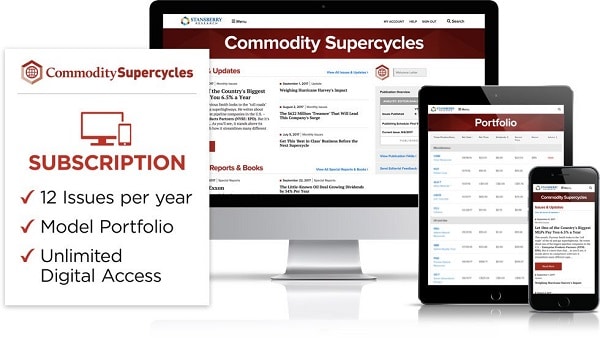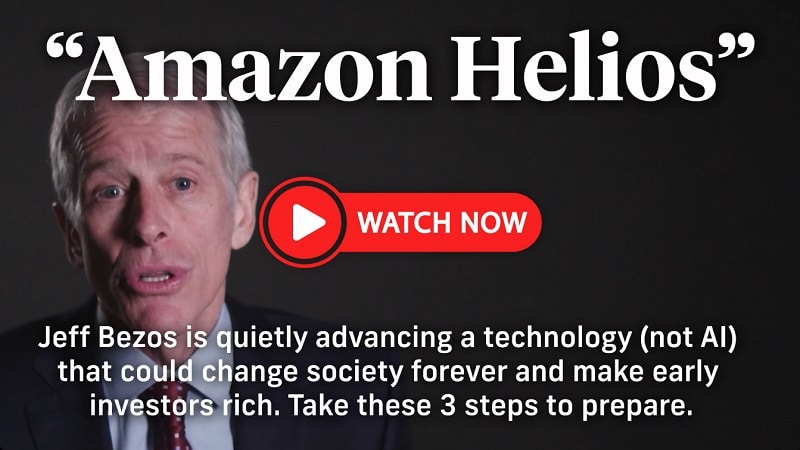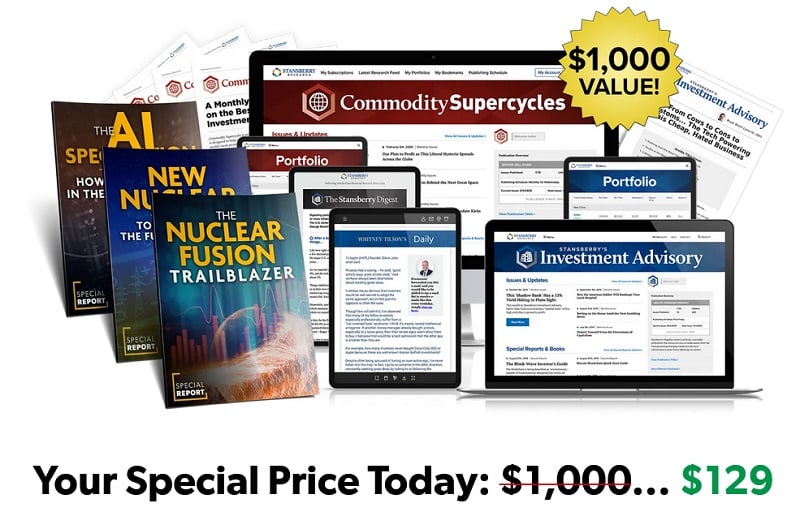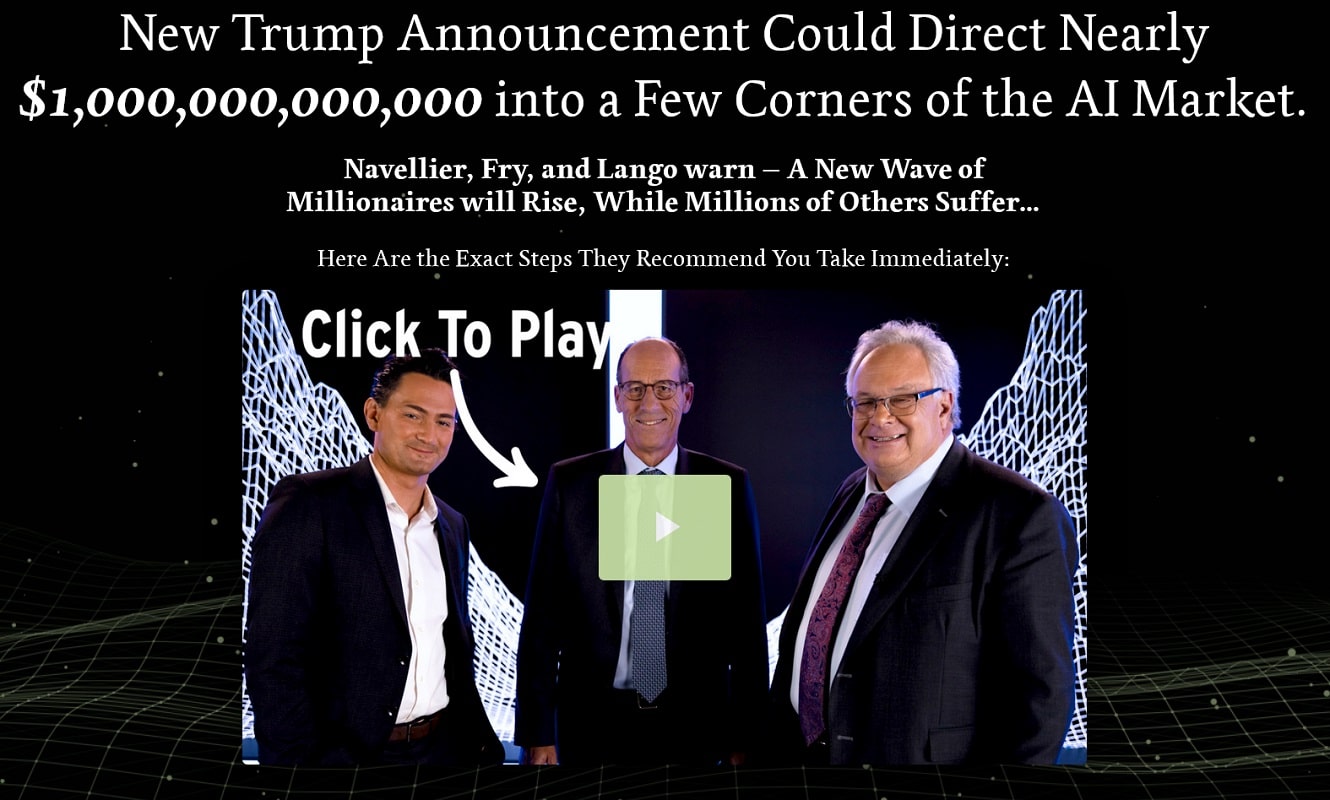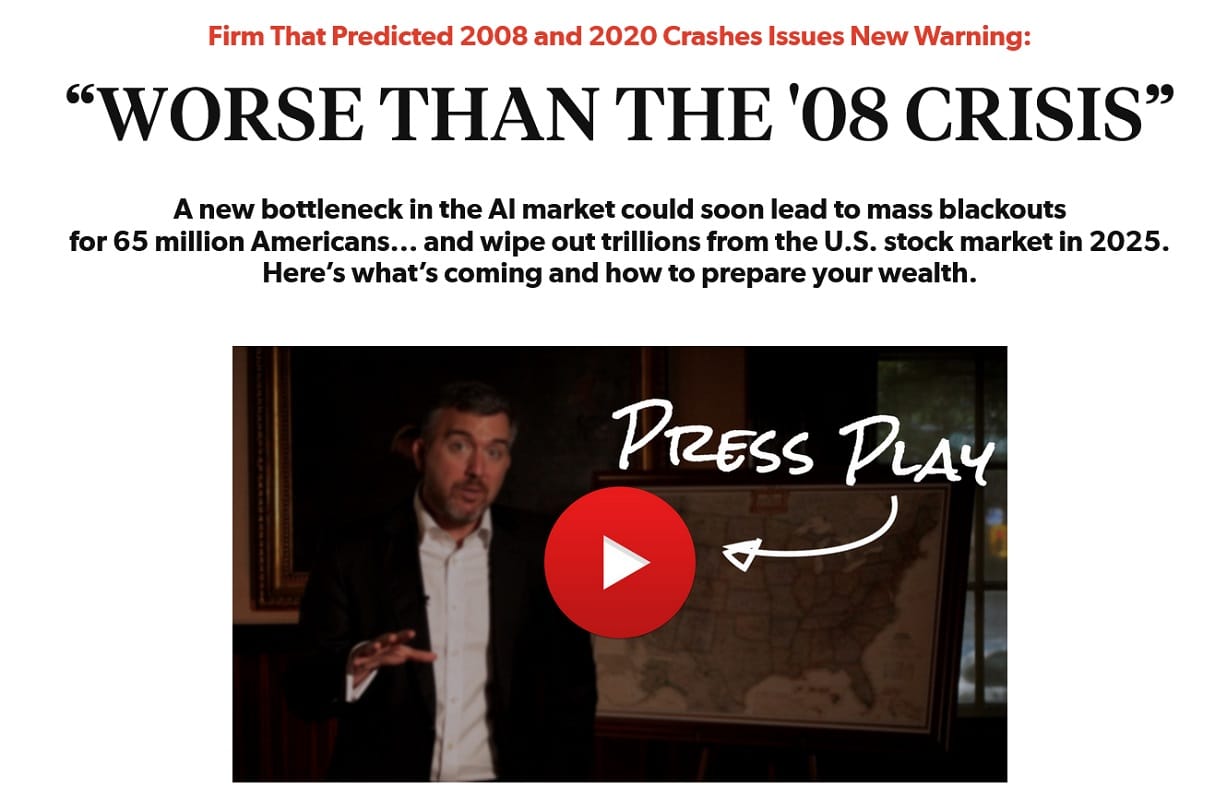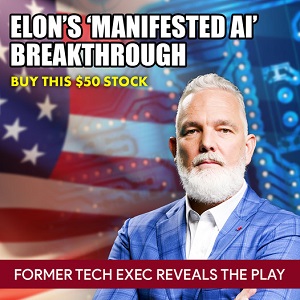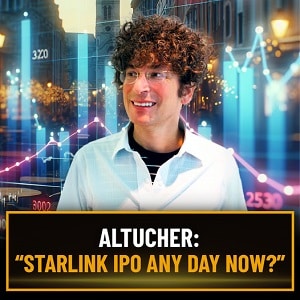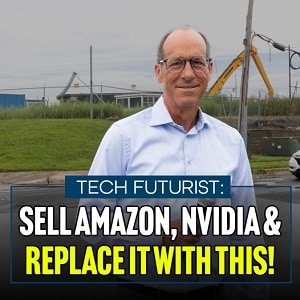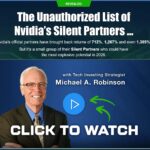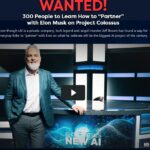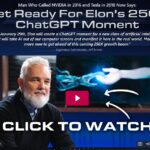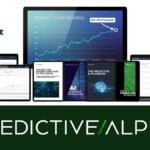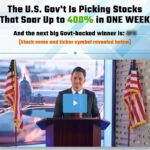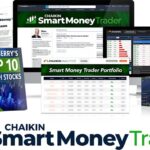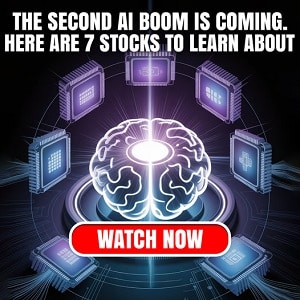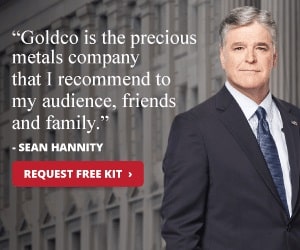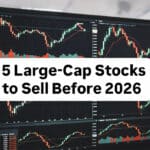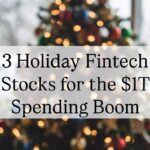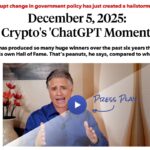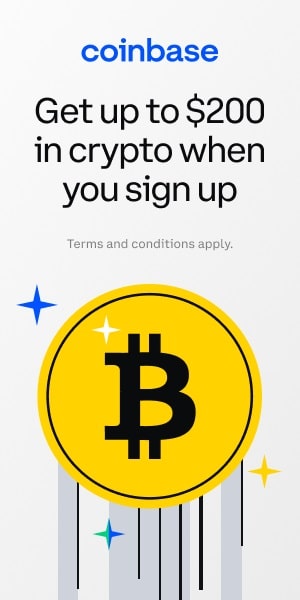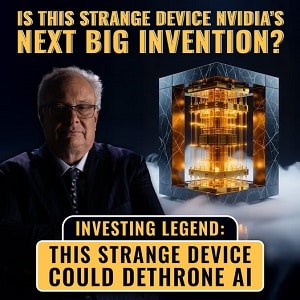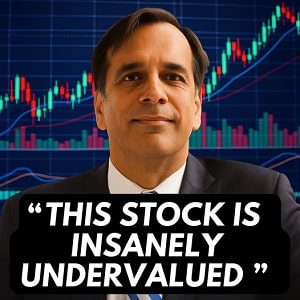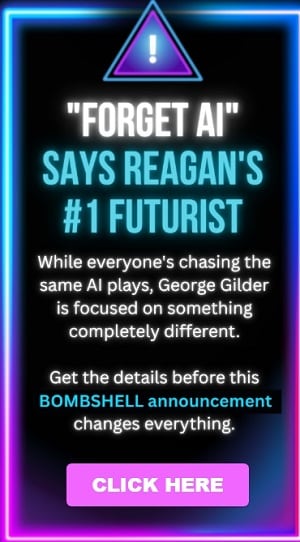In the ever-evolving landscape of investment opportunities, few pitches capture attention quite like Whitney Tilson’s latest venture, Commodity Supercycles.
Promising insights into a groundbreaking initiative dubbed “Amazon Helios,” Tilson—a former hedge fund manager turned investment guru—claims to offer subscribers a front-row seat to a technological revolution poised to reshape society and generate staggering wealth.
With bold predictions of 500%+ gains, free stock recommendations, and a narrative centered on nuclear fusion and artificial intelligence (AI), this newsletter has sparked intrigue and skepticism alike. But is Commodity Supercycles a legitimate opportunity, or just another overhyped sales pitch? In this comprehensive review, we’ll dissect Tilson’s presentation, analyze the core claims, evaluate his credibility, and assess whether this service is worth your time and money. And by the way, if you didn’t watch it – you can do it here!
Who Is Whitney Tilson?
Whitney Tilson is no stranger to the financial world. With 18 years as a hedge fund manager in New York, he once oversaw $200 million in assets at his peak.
His reputation as a savvy investor earned him the nickname “The Prophet” from CNBC after accurately predicting the 2008 financial crisis and profiting from short positions in the financial sector. Tilson’s track record includes calling the dot-com bubble’s collapse in 2000, warning of a 2022 market crash, and identifying 68 declining stocks, including high-profile bankruptcies like Lumber Liquidators, which he exposed on “60 Minutes”.
Beyond his financial acumen, Tilson boasts connections with Wall Street titans like Warren Buffett, Seth Klarman, David Einhorn, and Bill Ackman. He’s also a Harvard Business School graduate, a co-founder of Teach for America, and a philanthropist who helped build a field hospital in Central Park during the COVID-19 pandemic. Now, as the editor of Stansberry Research’s flagship newsletter, Stansberry’s Investment Advisory, and the creator of Commodity Supercycles, Tilson positions himself as a guide for everyday investors seeking generational wealth.
What Is Commodity Supercycles?
Commodity Supercycles is a monthly investment newsletter focused on identifying disruptive trends in energy and resources. Unlike his hedge fund days, where Tilson catered to ultra-wealthy clients, this service targets a broader audience—teachers, retirees, small-business owners, and the like. Priced at $499 annually (though heavily discounted in this offer), it promises subscribers exclusive research, stock picks, and daily market insights from Tilson’s extensive network.
The current pitch revolves around “Amazon Helios,” a term Tilson coined to describe what he believes is Jeff Bezos’ stealth initiative to revolutionize energy through nuclear fusion, accelerated by Amazon’s $100 billion AI investment announced in February 2025.
Alongside the newsletter, subscribers receive three free reports—”The Nuclear Fusion Trailblazer,” “New Nuclear: Top Stocks for the Future of Energy,” and “The AI Speculation: How to Make 500% in the Next Few Years”—plus a year of Stansberry’s Investment Advisory and Tilson’s daily email, “Whitney Tilson’s Daily”.
The Core Claim: “Amazon Helios” and Nuclear Fusion
Tilson’s presentation hinges on “Amazon Helios,” a supposed game-changer that he predicts will dwarf the impact of AI, quantum computing, electric vehicles, cryptocurrencies, and robotics combined. Named after the Greek sun god, “Helios” refers to nuclear fusion—a process that powers the sun by combining atoms to release massive energy. Unlike nuclear fission (splitting atoms), fusion offers virtually limitless energy with no carbon emissions or long-lived radioactive waste, using hydrogen, the universe’s most abundant element.
Tilson asserts that Jeff Bezos has been quietly investing in fusion since 2011, with a pivotal move on February 6, 2025, when Amazon announced a $100 billion AI investment. He argues this AI push will solve fusion’s technical hurdles, like stabilizing plasma in tokamaks (doughnut-shaped reactors), citing Princeton University’s AI breakthroughs in predicting plasma instabilities. Tilson predicts fusion will not only transform Amazon’s colossal energy needs—powering its 100 cargo jets, 40,000 semitrucks, and 38 million square feet of data centers—but also fuel AI’s exponential growth, creating a $40 trillion market and minting millionaires.
Supporting Evidence and Hype
Tilson bolsters his case with impressive credentials and endorsements. The World Economic Forum calls fusion “arguably the most exciting human discovery since fire,” while Marc Benioff labels it “the holy grail.” Bill Gates, Sam Altman, Peter Thiel, and other Silicon Valley elites are investing heavily, with Altman sinking $375 million into fusion ventures. Bloomberg, CNN, and the BBC echo Tilson’s optimism, forecasting societal transformation and endless clean energy. A December 2022 breakthrough at Lawrence Livermore National Laboratory, achieving fusion “ignition” (more energy out than in), adds scientific heft, as does a January 2025 Chinese lab record of sustaining plasma for nearly 20 minutes.
Tilson ties this to Amazon’s February 2025 AI announcement, suggesting it’s a strategic play to fast-track fusion. He cites soaring nuclear stocks—NuScale Power (up 1,227%), Oklo (up 873%), and Centrus Energy (up 2,693%)—as proof of a booming trend. He also highlights past clean-energy winners like Enphase Energy (1,192% in three years), Plug Power (1,914% in one year), and Tesla (2,627% since 2019) to argue fusion stocks could follow suit.
The Investment Opportunity
Tilson offers three steps to capitalize on this “seminal moment”:
1. Buy “The Nuclear Fusion Trailblazer”: An unnamed oil and gas company investing in two fusion startups and building natural gas plants for AI data centers. It’s highly profitable, with 37 years of consecutive dividend increases.
2. Invest in Top Nuclear Energy Stocks: Detailed in “New Nuclear,” these are poised to benefit from AI-driven data center demand and nuclear’s resurgence, backed by Microsoft, Alphabet, Meta, and Amazon investments, plus Trump’s pro-nuclear executive order.
3. Speculate on a $4 AI Stock: A small, profitable firm with a $258 million Department of Defense contract, producing components critical to AI, smartphones, and military tech. Tilson predicts it could soar as AI booms.
As a free teaser, Tilson recommends Eni (NYSE: E), an Italian energy company with a 7% dividend yield and a stake in Commonwealth Fusion Systems (CFS), a private fusion firm backed by Bezos and Gates. CFS aims to build a cost-effective reactor by the early 2030s, undercutting the $65 billion ITER project.
Tilson’s Track Record: Hits and Misses
Tilson’s credibility rests on his past successes. He turned $1,000 into $112,000 with Netflix after reversing a bearish stance in 2010, recommended Apple before its 65,158% run, and nailed Amazon’s 8,433% surge. His 19 picks with 800%+ gains—like Tractor Supply (35,629%) and AutoZone (11,660%)—showcase his knack for spotting winners.
Stansberry’s Investment Advisory, under his editorship, delivered gains like 440% in 2022’s brutal market. Testimonials from billionaires Joel Greenblatt and John Petry laud his insights and network.
Yet, Tilson admits to missteps, like initially shorting Netflix—a rare public mea culpa that underscores his willingness to adapt. His bearish calls, while often accurate (e.g., Lumber Liquidators’ 80% drop), contrast with this bullish pitch, raising questions about consistency. Past performance, as he notes, doesn’t guarantee future results, and his fusion predictions hinge on unproven technology scaling commercially.
Is It Legit? Evaluating the Pitch
Strengths
– Credible Backing: Tilson’s Wall Street pedigree, documented wins, and elite connections lend weight. Stansberry Research, his publisher, has a 25-year track record of profitable picks.
– Timely Trends: Nuclear fusion and AI are real, high-stakes fields. The 2022 ignition milestone and 2025 AI investment surge align with Tilson’s timeline. Nuclear stocks’ recent gains signal market interest.
– Value Proposition: For $129, subscribers get two newsletters, daily emails, and three reports—competitive pricing compared to premium services charging thousands.
– Risk-Free Trial: A 30-day, 100% refund guarantee, with reports kept as a gift, lowers the barrier to entry.
Weaknesses
– Speculative Nature: Fusion remains experimental. While promising, commercial viability is years away—ITER’s 2034 target dwarfs CFS’s ambitions. Tilson’s $40 trillion estimate feels aspirational, not assured.
– Hype Overload: Phrases like “generational wealth” and “100 million times more energy” amplify excitement but lack nuance. The “Amazon Helios” label is Tilson’s invention, not an official Amazon project, potentially exaggerating Bezos’ focus.
– Upsell Risk: Free reports and a low entry price often lead to pricier upsells, a common tactic in newsletter marketing. The pitch’s urgency (“act fast or miss out”) may pressure hasty decisions.
– Omitted Risks: Fusion’s technical and regulatory hurdles—cost overruns, safety concerns, grid integration—are glossed over. Stock picks, especially the $4 speculation, carry high volatility.
Who Should Subscribe?
Commodity Supercycles suits:
– Growth-Oriented Investors: Those comfortable with risk and excited by emerging tech like fusion and AI.
– Tilson Fans: Readers valuing his contrarian insights and network-driven ideas.
– Diversifiers: Investors seeking energy-sector exposure beyond oil and renewables.
It’s less ideal for:
– Conservative Investors: Those prioritizing stability over speculative gains.
– Skeptics of Hype: Readers wary of bold claims without concrete timelines.
– DIY Researchers: Those preferring free resources over paid subscriptions.
Competitive Landscape
Compared to peers like Motley Fool’s Stock Advisor ($199/year) or Seeking Alpha Premium ($239/year), Commodity Supercycles is less expensive and offers a niche energy focus and Tilson’s daily email—a rarity. Stansberry’s broader reputation adds polish, though its aggressive marketing can feel pushy. Free alternatives (e.g., X posts, financial blogs) lack Tilson’s curated analysis but avoid costs entirely.
Final Verdict: Legit, But Not a Slam Dunk
Commodity Supercycles is legitimate in the sense that it’s a real service from a credible figure, backed by a reputable publisher.
Tilson’s fusion-AI thesis taps into genuine trends, and his track record suggests he’s worth hearing out. The offer’s value—two newsletters, reports, and daily insights for a discounted rate—is compelling, especially with a no-risk trial.
However, “Amazon Helios” is more speculative vision than proven fact. Fusion’s transformative potential is real, but its timeline and scale remain uncertain. The pitch’s exuberance risks overselling an opportunity that’s years from fruition, and subscribers should brace for upsells.
If you’re intrigued by Tilson’s narrative and can stomach the unknowns, it’s a worthwhile trial. Just don’t expect guaranteed riches—invest with eyes open, not blind faith.
Conclusion
Whitney Tilson’s Commodity Supercycles blends a seasoned investor’s insight with a futuristic bet on nuclear fusion and AI. It’s a high-stakes play wrapped in an accessible package, leveraging Amazon’s mystique and Tilson’s Wall Street clout. While not a scam, its success hinges on fusion’s uncharted path and your tolerance for bold predictions. Take the 30-day trial, study the reports, and decide for yourself—because in investing, as Tilson knows, timing and skepticism are everything.
FAQ: Commodity Supercycles Review – Most Popular Questions and Answers
What is Commodity Supercycles?
Commodity Supercycles is a monthly investment newsletter created by Whitney Tilson, a former hedge fund manager with 18 years of Wall Street experience. It focuses on identifying disruptive trends in energy and resources, particularly nuclear fusion and artificial intelligence (AI). Priced at $129 annually, it includes stock picks, research reports, and daily market insights via Whitney Tilson’s Daily email, targeting everyday investors like teachers, retirees, and small-business owners.
Who is Whitney Tilson, and why should I trust him?
Whitney Tilson is a seasoned investor who ran a hedge fund managing $200 million, earning the nickname “The Prophet” from CNBC for predicting the 2008 financial crisis. He’s accurately called the dot-com crash, the 2022 market downturn, and 68 stock declines, including Lumber Liquidators’ bankruptcy. With ties to Wall Street legends like Warren Buffett and a track record of picks like Netflix (11,108% gains) and Apple (65,158% gains), Tilson has credibility. However, past success doesn’t guarantee future results, and his fusion predictions are speculative.
What is “Amazon Helios,” and is it real?
“Amazon Helios” is a term coined by Tilson, not an official Amazon project. It refers to his theory that Jeff Bezos is quietly advancing nuclear fusion, leveraging Amazon’s $100 billion AI investment announced in February 2025. Tilson believes this will solve fusion’s technical challenges and meet Amazon’s massive energy needs (e.g., powering 40,000 semitrucks and 38 million square feet of data centers). While Amazon’s AI spending is real, “Helios” is Tilson’s speculative narrative, not a confirmed initiative.
What is nuclear fusion, and why does Tilson think it’s a big deal?
Nuclear fusion combines atoms to release massive energy, unlike fission, which splits them. It powers the sun, uses abundant hydrogen as fuel, and produces no carbon emissions or long-lived waste. Tilson claims it could generate “20 to 100 million times more energy” than fossil fuels, citing a 2022 Lawrence Livermore breakthrough and a 2025 Chinese lab record. He predicts a $40 trillion market, though commercial viability remains years away, making it a high-risk, high-reward bet.
What are the three steps Tilson recommends for investing?
Answer:
Step 3: Speculate on a $4 AI Stock – A small, profitable firm with a $258 million Department of Defense contract, critical to AI tech, with potential for big gains but higher risk.
Step 1: Buy “The Nuclear Fusion Trailblazer” – An unnamed oil and gas company investing in fusion startups and AI data center power plants, known for profitability and 37 years of dividend hikes.
Step 2: Buy Top Nuclear Energy Stocks – Detailed in the “New Nuclear” report, these benefit from AI-driven energy demand and investments by Amazon, Microsoft, and others.
What’s the free stock pick Tilson gives, and is it worth buying?
Tilson’s free pick is Eni (NYSE: E), an Italian energy company with a 7% dividend yield and a stake in Commonwealth Fusion Systems (CFS), a private fusion firm backed by Bezos and Gates. CFS aims to build a cost-effective reactor by the early 2030s. Eni offers stability and exposure to fusion, but its upside may be modest compared to Tilson’s other picks. It’s a solid option for conservative investors, though not a guaranteed blockbuster.
What do I get if I subscribe to Commodity Supercycles?
For $129, you receive:
- 12 months of Commodity Supercycles with monthly stock picks.
- Three free reports: “The Nuclear Fusion Trailblazer,” “New Nuclear: Top Stocks for the Future of Energy,” and “The AI Speculation.”
- 12 months of Stansberry’s Investment Advisory (a $199 value).
- Daily Whitney Tilson’s Daily emails with market insights.
- Access to archived reports, like “The No. 1 Gold Stock of 2025.” It’s a robust package, especially with the 30-day refund guarantee.
Is Commodity Supercycles a scam?
No, it’s not a scam. It’s a legitimate service from Tilson, backed by Stansberry Research, a reputable publisher with 25 years of history. Tilson’s credentials and past wins are real, and the offer includes a risk-free trial. However, the “Amazon Helios” pitch is speculative, and fusion’s timeline is uncertain. It’s a credible opportunity, but not a sure thing—beware of hype and potential upsells.
How risky is this investment opportunity?
It’s high-risk. Nuclear fusion is experimental, with commercial success years away (e.g., ITER’s 2034 target). Technical hurdles, regulatory delays, and market volatility could derail gains. The $4 AI stock speculation adds further risk due to its small size and price swings. Tilson’s 500%+ gain predictions are ambitious, and while some nuclear stocks (e.g., NuScale, up 1,227%) have soared, losses are possible. Past clean-energy winners like Tesla (2,627%) show potential, but there’s no guarantee.
Who is Commodity Supercycles best for?
It’s ideal for:
- Growth-oriented investors comfortable with risk and excited by fusion and AI.
- Fans of Tilson’s contrarian style and network-driven insights.
- Those diversifying into energy beyond oil and renewables. It’s less suited for conservative investors seeking stability, skeptics of bold claims, or those preferring free research over paid subscriptions.
What’s the catch with the “risk-free” trial?
The 30-day, 100% refund guarantee is genuine—you can cancel and keep the reports as a gift. However, the low entry price often leads to upsells for pricier services, a common newsletter tactic. The pitch’s urgency (“act fast or miss out”) may pressure quick decisions, so review the full offer on the order form to avoid surprises.
Can I really make 500%+ gains as Tilson claims?
It’s possible but not guaranteed. Tilson’s past hits—like Tractor Supply (35,629%) and Netflix (11,108%)—prove he can spot big winners. Nuclear stocks like Centrus Energy (2,693%) and AI plays like Nvidia (2,248%) show precedent. However, fusion’s unproven scale and timing mean 500% gains are speculative. You’d need luck, patience, and tolerance for losses—don’t bank on it as a surefire windfall.
Should I subscribe to Commodity Supercycles?
If you’re intrigued by fusion and AI, trust Tilson’s insights, and can afford the cost, the trial is worth it—especially with the refund option. It’s a chance to explore a cutting-edge trend with a seasoned guide. But if you’re skeptical of hype, prefer safer bets, or doubt fusion’s near-term payoff, skip it. Research the reports yourself during the 30 days and decide based on your goals.

